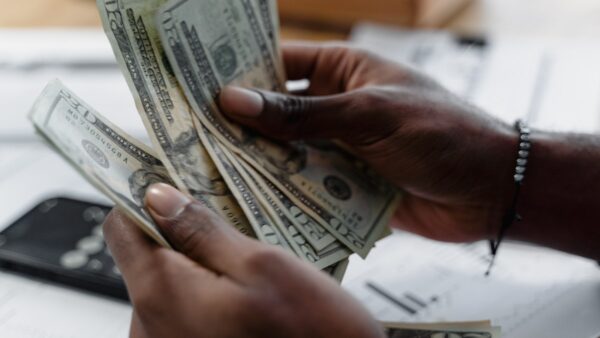By Claire Ballentine
The battle over raising the debt ceiling has threatened to rattle markets and wreak havoc on the US economy.

Political leaders in Washington have been arguing for months over the federal debt limit and the conditions under which to raise it. Failure to come to an agreement would mean a first-ever default on some of the government’s obligations.
The debt ceiling is essentially a cap on US government borrowing, right now at nearly $31.4 trillion. Since January, Treasury Secretary Janet Yellen has been using special measures to avoid a payment default, but she’s warned that the Treasury risks running out of cash for its obligations as soon as June 1. JPMorgan CEO Jamie Dimon and other bank executives have warned of dire consequences if a deal isn’t reached.
Read more: Debt-Ceiling Drama Threatens Supremacy of Already Wobbly Dollar
It’s a fluid situation, with ongoing discussions between White House and congressional leaders. House Speaker Kevin McCarthy said Thursday negotiators could agree on a deal in principle as soon as this weekend, but then talks broke down on Friday, with Republican Representative Garret Graves saying the White House was being “unreasonable.”
Reaching an agreement before June 1 would likely limit the economic damage. Still, by getting so close to the deadline the US risks a credit downgrade, like in 2011.
Here’s everything you need to know about what this means for you:
What’s holding up the talks?
A partisan stalemate is the issue. Republicans want the deal to raise the debt limit to include spending cuts. They’re pushing for other measures like adding new work requirements for Medicaid and applying existing work requirements to older individuals who receive food stamps.
President Joe Biden has thus far rejected work requirements on Medicaid. Negotiations also involve a retracement of unspent Covid-19 funds and a process for accelerating permits for energy projects.
What happens if the US defaults?
A default would mean that those owed money by the federal government won’t get it, at least not on time. Those parties include holders of Treasury securities, Social Security recipients, members of the military and Medicare providers.
Neglecting to pay bondholders in particular could result in credit rating companies downgrading Treasury debt. That in turn would result in higher borrowing costs for the government as well as everyday businesses and households, and would almost certainly lead to a recession.
And while an outright default is unlikely, getting too close to the debt ceiling could still have consequences. In 2011, S&P Global Ratings cut the US rating after a protracted debt limit debate, which hit markets and hurt consumer confidence.
“While an outright default that would wreak havoc on global financial markets and increase borrowing costs for businesses and consumers is unthinkable, a US debt rating downgrade similar to 2011 cannot be dismissed,” said Seema Shah, chief global strategist at Principal Asset Management in Iowa. “Even the uncertainty from the debt ceiling stalemate could trigger a selloff in US risk assets and potentially expedite a recession.”
Marc Lescarret, founder of Marc Alan Wealth Management in New Jersey, said there’s “a good chance” that the US credit rating will be downgraded again.
In addition to higher borrowing costs for the government, that would also likely trickle down to consumers, with mortgage rates potentially rising to 8.4%, according to a report from the real estate firm Zillow.
What does this mean for my investments?
Back in 2011, a similar standoff triggered an unprecedented credit downgrade of the US government and a 16% drop in the S&P 500 over the span of 10 days, while the VIX volatility index climbed to 48.
The stock market is watching the negotiations closely. Avoiding a default requires an agreement that can pass both houses of Congress and there could be volatility as the deadline approaches.
In terms of US Treasuries, which investors have flooded into as rates rose from historic lows, a potential downgrade or default could be a mixed bag.
During times of stress, Treasuries often receive an influx of cash since they’re considered relatively risk-free. That could happen again as the current situation plays out. It’s somewhat ironic given that Treasury payments would be one of the obligations the US would theoretically default on. Yet most experts expect Treasury holders to still get paid in any default or downgrade scenario, just later than expected.
In the weeks after S&P’s downgrade in 2011, Treasury prices actually rose. Although that may not necessarily happen again this time, Julia Colantuono, owner of One Financial Design in Massachusetts, still recommends them as a place to store short-term cash.
What can I do to prepare?
It’s especially important to have a diversified portfolio of stocks and bonds, according to Colantuono.
She cautioned against panicking, but said it’s worth checking your portfolio makeup and thinking about when you might need to take cash out of the market for short-term goals. If you were planning to take money out of the market to buy a house, say in six months, consider what the market might be like then.
“Keeping in mind time horizon for various financial goals will serve investors well, so their investments have more time to recover from short-term volatility,” Colantuono said.
Some investors are also turning to gold as a hedge against a potential default or downgrade. More than half of finance professionals in a recent Bloomberg survey said gold is what they would buy in the event of a default. Inflows into exchange-traded funds tracking gold have topped $700 million in May, according to data compiled by Bloomberg.
“For investors that have a history with non-traditional asset classes — like gold and crypto — it could be a good time to look at opportunities,” said Mike Bailey, director of research at FBB Capital Partners.
More stories like this are available on bloomberg.com.




